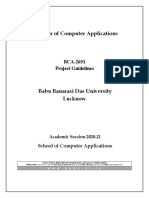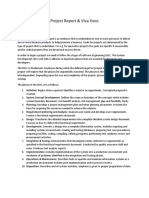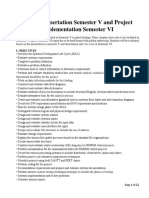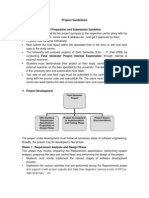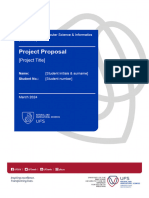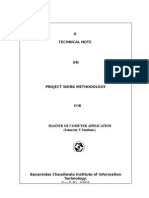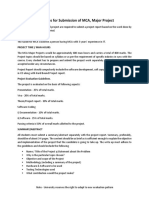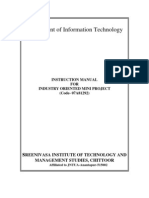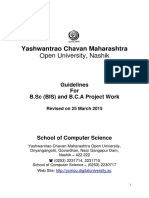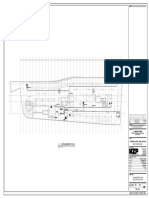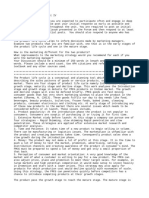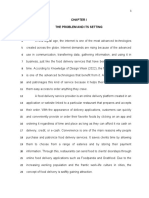0% found this document useful (0 votes)
29 views17 pagesProject Implementation
The document outlines the requirements and structure for a project dissertation spanning two semesters, detailing objectives, project types, and documentation guidelines. Students are expected to work on real-life projects, complete various analyses, and produce comprehensive reports including system design, implementation, and testing. The final report must adhere to specific formatting and content standards, including chapters on introduction, technology survey, requirements analysis, system design, implementation, results, and conclusions.
Uploaded by
adarshvishwakarma497Copyright
© © All Rights Reserved
We take content rights seriously. If you suspect this is your content, claim it here.
Available Formats
Download as DOCX, PDF, TXT or read online on Scribd
0% found this document useful (0 votes)
29 views17 pagesProject Implementation
The document outlines the requirements and structure for a project dissertation spanning two semesters, detailing objectives, project types, and documentation guidelines. Students are expected to work on real-life projects, complete various analyses, and produce comprehensive reports including system design, implementation, and testing. The final report must adhere to specific formatting and content standards, including chapters on introduction, technology survey, requirements analysis, system design, implementation, results, and conclusions.
Uploaded by
adarshvishwakarma497Copyright
© © All Rights Reserved
We take content rights seriously. If you suspect this is your content, claim it here.
Available Formats
Download as DOCX, PDF, TXT or read online on Scribd
/ 17




